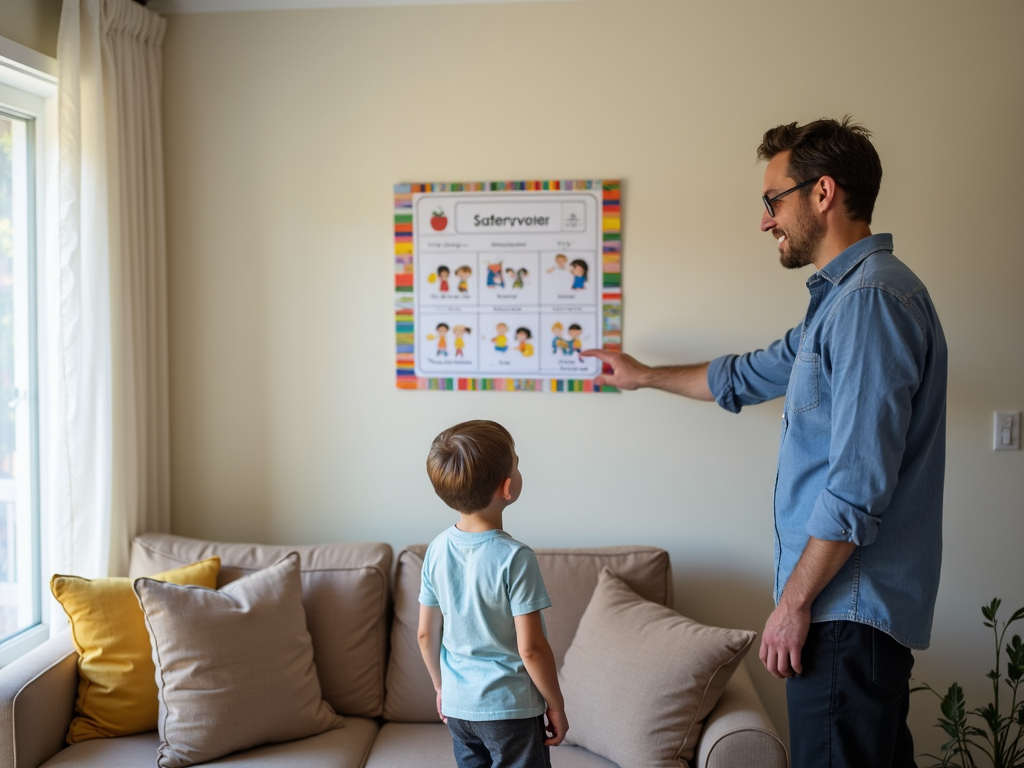Family wellness is essential for the happiness and health of all family members. When families face challenges like developmental disabilities, therapy can be a powerful tool to support and strengthen them. This article delves into how therapies such as Applied Behavior Analysis (ABA) and family therapy can improve family dynamics, reduce stress, and foster a nurturing environment.

What is Family Wellness?
Family wellness is a holistic concept that encompasses the physical, emotional, and social well-being of all family members. It involves creating an environment where each person feels supported, valued, and connected. Physically, it means ensuring that everyone's basic needs are met, such as nutrition, sleep, and healthcare. Emotionally, it involves fostering open communication, empathy, and resilience. Socially, it means building strong relationships within the family and with the broader community. For families dealing with developmental disabilities, achieving wellness can be more complex due to additional stressors, but it is equally, if not more, important. By prioritizing family wellness, parents and caregivers can create a nurturing atmosphere that promotes growth and happiness for everyone.
Challenges Families Face with Developmental Disabilities
Raising a child with a developmental disability presents unique challenges that can strain family dynamics. Communication barriers are common, as children with conditions like autism may struggle to express their needs or understand others. Behavioral issues, such as tantrums or aggression, can disrupt daily life and increase stress levels. According to the Centers for Disease Control and Prevention, approximately 1 in 6 children in the U.S. has a developmental disability, underscoring the prevalence of these challenges. Families may also face financial burdens due to therapy costs, educational needs, and medical expenses. Moreover, the emotional toll on parents and siblings can lead to feelings of isolation or burnout. Recognizing these challenges is the first step toward seeking effective support and interventions.

How Therapy Can Help
Therapy offers families tools and strategies to address these challenges. Behavioral therapy, particularly Applied Behavior Analysis (ABA), is widely recognized for its effectiveness in helping individuals with developmental disabilities. ABA focuses on understanding and modifying behavior through structured techniques and positive reinforcement. Additionally, family therapy can improve communication and relationships within the family, creating a more supportive environment for everyone. By participating in therapy, families can learn to navigate their unique circumstances more effectively, reducing stress and enhancing overall wellness.
Applied Behavior Analysis (ABA): An Overview
Applied Behavior Analysis (ABA) is a scientific approach to understanding and changing behavior. It is based on the principles of learning theory, which posit that behaviors are influenced by their consequences. In ABA, therapists conduct a thorough assessment to identify target behaviors and then develop individualized interventions. These interventions often involve breaking down complex skills into smaller, manageable steps, using prompts to guide the child, and gradually fading those prompts as the child becomes more independent. Positive reinforcement, such as praise or rewards, is used to encourage desired behaviors. ABA can be applied in various settings, including home, school, and community, making it a versatile tool for families. Research has consistently shown that ABA can lead to significant improvements in communication, social skills, and adaptive behaviors for individuals with developmental disabilities. For more information, visit the Behavior Analyst Certification Board.

Benefits of ABA for Families
ABA not only benefits the individual with the disability but also has a profound impact on the entire family. By reducing problematic behaviors and teaching new skills, ABA can decrease stress and improve family interactions. For example, a child who learns to communicate their needs effectively is less likely to experience frustration, leading to fewer outbursts and a calmer home environment. Families often report feeling more empowered and confident in their ability to support their loved ones. Consider the Smith family, who struggled with their son Jake's frequent meltdowns during family outings. After starting ABA therapy, Jake learned coping strategies to manage his anxiety, and his parents learned how to reinforce positive behaviors. Now, family trips are more enjoyable, and the Smiths feel more connected and less stressed.
Incorporating ABA into Daily Family Life
Families can integrate ABA principles into their daily routines to reinforce learning and behavior change. This might include using visual schedules to help children understand and anticipate daily activities, setting clear expectations for behavior, and consistently applying positive reinforcement. For instance, praising a child for completing a task or following instructions can encourage repetition of those behaviors. It's also important for families to collaborate with ABA therapists to ensure consistency between therapy sessions and home life. By doing so, families can create a supportive environment that promotes the generalization of skills learned in therapy to everyday situations.

The Importance of Family Therapy
Family therapy is a form of counseling that focuses on improving communication and resolving conflicts within the family unit. It provides a safe space for family members to express their feelings, understand each other's perspectives, and develop healthier ways of interacting. This can be especially beneficial for families navigating the complexities of developmental disabilities, as it helps address the emotional and relational challenges that often accompany these conditions. Techniques used in family therapy may include role-playing, communication exercises, and problem-solving strategies. By participating in family therapy, families can strengthen their bonds, reduce tension, and create a more harmonious home environment. Learn more from the American Association for Marriage and Family Therapy.

Practical Strategies for Families
To enhance family wellness, consider implementing the following strategies:
- Set realistic goals: Focus on small, achievable steps rather than aiming for perfection. For example, if your child is learning to brush their teeth independently, celebrate each small step, like holding the toothbrush or applying toothpaste.
- Communicate openly: Encourage all family members to share their thoughts and feelings. Use "I" statements to express emotions without blame, such as "I feel overwhelmed when..."
- Seek support: Connect with therapists, support groups, or online communities. Sharing experiences and advice can provide comfort and practical tips.
- Practice self-care: Caregivers need to prioritize their own well-being. Schedule time for activities you enjoy, whether it's reading, exercising, or simply taking a quiet moment for yourself.
- Celebrate successes: Acknowledge even small victories. Create a "success jar" where family members can write down positive moments and read them together at the end of the week.

Conclusion
Therapy, including Applied Behavior Analysis and family therapy, can be transformative for families dealing with developmental disabilities. By providing tools to manage behaviors, improve communication, and strengthen relationships, therapy supports family wellness and creates a more harmonious home environment. Embracing these resources can lead to a brighter, more connected future for the entire family.
Discuss Here